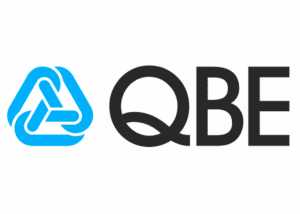Gamification: Where engagement partners with influence

At first glance, gamification in the insurance industry can seem to be an effort to influence policyholder behavior, but mostly it’s about engagement. Generally, gamification is a means of marketing that uses elements of play, such as rewards points or incentives, to raise customer engagement with products or services.
Usage-based insurance in the P&C space is a prime area for gamification, according to Kannan Aramesh, insurance lead at Infosys. This is apparent in telematics programs, he says. “A data-oriented gamification, like credits back and points, in usage-based insurance is a little ahead in the game of adopting new technology.”
Kanaan Aramesh, insurance lead at Infosys
Still, life and health insurance remain the “cornerstones” of gamification in the industry, Aramesh adds. Infosys offers Helix, a health insurance data platform that can be used for such efforts, along with its Innovation Network, which partners with startup technology companies to meet client needs in a variety of fields.
Health and life insurers do use “digital nudges” in gamification to engage with digitally savvy customers, according to Aramesh. “They look holistically at how a person’s health goals feed back, to provide more of a view on the premiums they’re paying or the coverage they have,” he says. “With an engaged customer, both the customer and the insurance carrier benefit, because if they’re healthy, there are less claims and mortality rates go down.”
John Hancock Life Insurance’s Vitality program offers its policyholders rewards and incentives for exercise, healthy eating and other desired behaviors, and provides technology tools to document policyholders efforts, says Lindsay Hanson, vice president and head of behavioral insurance, global strategy and delivery at John Hancock. The program issues points for physical activity, such as walking, running or gym workouts, for cancer screenings and for regular vaccinations and flu shots. It also provides a deep discount on wearable devices to measure activity.

Lindsay Hanson, Vice President, Head of Behavioral Insurance, Global Strategy and Delivery, John Hancock.
Based on point totals, participants get rewards such as discounted Amazon Prime membership, and hotel discounts. Vitality also offers discounts on fruits and vegetables at grocery stores to encourage good nutrition.
“We want to encourage, we want to help, and we want to continue to bring these types of programs and opportunities to our customers so that they can have the tools and the resources to actually live a longer, healthier, and better life,” says Hanson. “It’s really embedded in our values and our mission as an organization and is something that we’re truly passionate about.”
The data John Hancock compiles through Vitality is examined from a risk and actuarial perspective to consider how it can affect its policies and pricing, according to Hanson. This is done in aggregate, though, rather than at the individual policyholder level, she says. The Vitality program also keeps John Hancock vital in the marketplace, as she explains.
“Some of the challenge is making sure that we’re staying up to date with all of the latest and greatest, whether it’s devices or integrations with companies,” she says. “This space is changing so rapidly. We need to make sure that we’re staying top of mind, we’re staying relevant, we’re staying new, we’re staying fresh. It’s also really rewarding to always be looking at what’s coming next.”

Tony Laudato, vice president of marketing & combination products at Munich Re.
For Munich Re, engagement with policyholders does go hand in hand with influencing their behavior. “It could be at different points within the value chain where they’re looking to shift that behavior,” says Tony Laudato, vice president of marketing & combination products at Munich Re. Laudato’s focus is the life insurance space.
“It’s a nudge theory of getting people to do small things, reporting that and keeping that going,” he says. “The other element of gamification that’s happening is trying to create a much more direct link between the insurance company and the actual insured. A lot of times that relationship’s been driven by distribution. There is some desire by insurance companies now to make that deeper connection through different things out of the gamification and the reward side.”
Increased engagement has its benefits, but also some challenges, according to Laudato. “Changing behaviors to keep people healthier is great for the consumer, and at the same time for insurers’ bottom line, it’s going to be better as well,” he says. “The cons are an additional complexity because that relationship hadn’t been there in the past. How does an insurer inserting themselves upend their existing distribution channels? There’s hesitancy in some companies about going too far and being able to handle that channel conflict appropriately.”
The pros of gamification outweigh those cons, in Laudato’s view. “It brings insurers into the data world more, and collecting more data than they had probably done previously. It’s a new skill set that they need to develop.”




